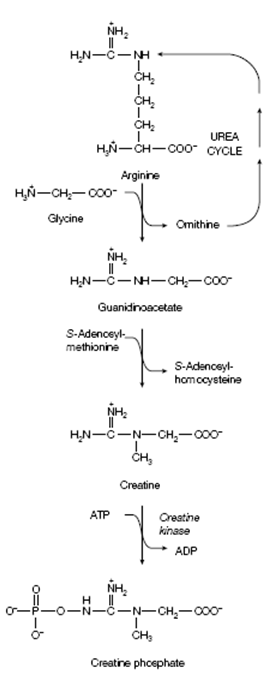Formation of creatine phosphate:
The urea cycle is also the beginning point for the synthesis of another important metabolite creatine phosphate. This phosphagen gives a reservoir of high- energy phosphate in muscle cells as the energy released upon its hydrolysis is greater than which released upon the hydrolysis of ATP (ΔG for creatine phosphate hydrolysis -10.3 kcal mol-1 compared with -7.3 kcal mol-1 for ATP hydrolysis). The first step in the formation of creatine phosphate is the condensation of glycine and arginine to form guanidinoacetate. Ornithine is developed in this reaction and can then be re-utilized through the urea cycle. Guanidinoacetate is then methylated through the methyl group donor S- adenosyl methionine to form creatine that is in turn phosphorylated by creatine kinase to form creatine phosphate shown in next figure.

Figure: Excess ammonia leads to the formation of glutamate and glutamine

Figure: Formation of creatine phosphate.